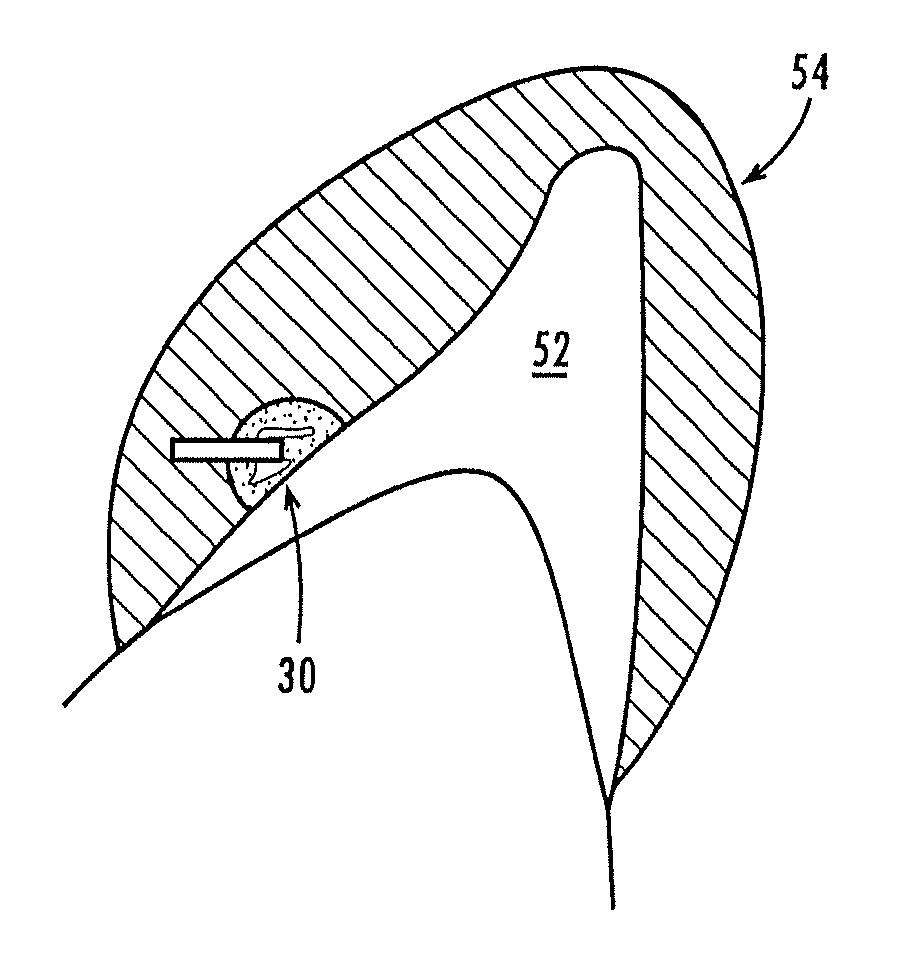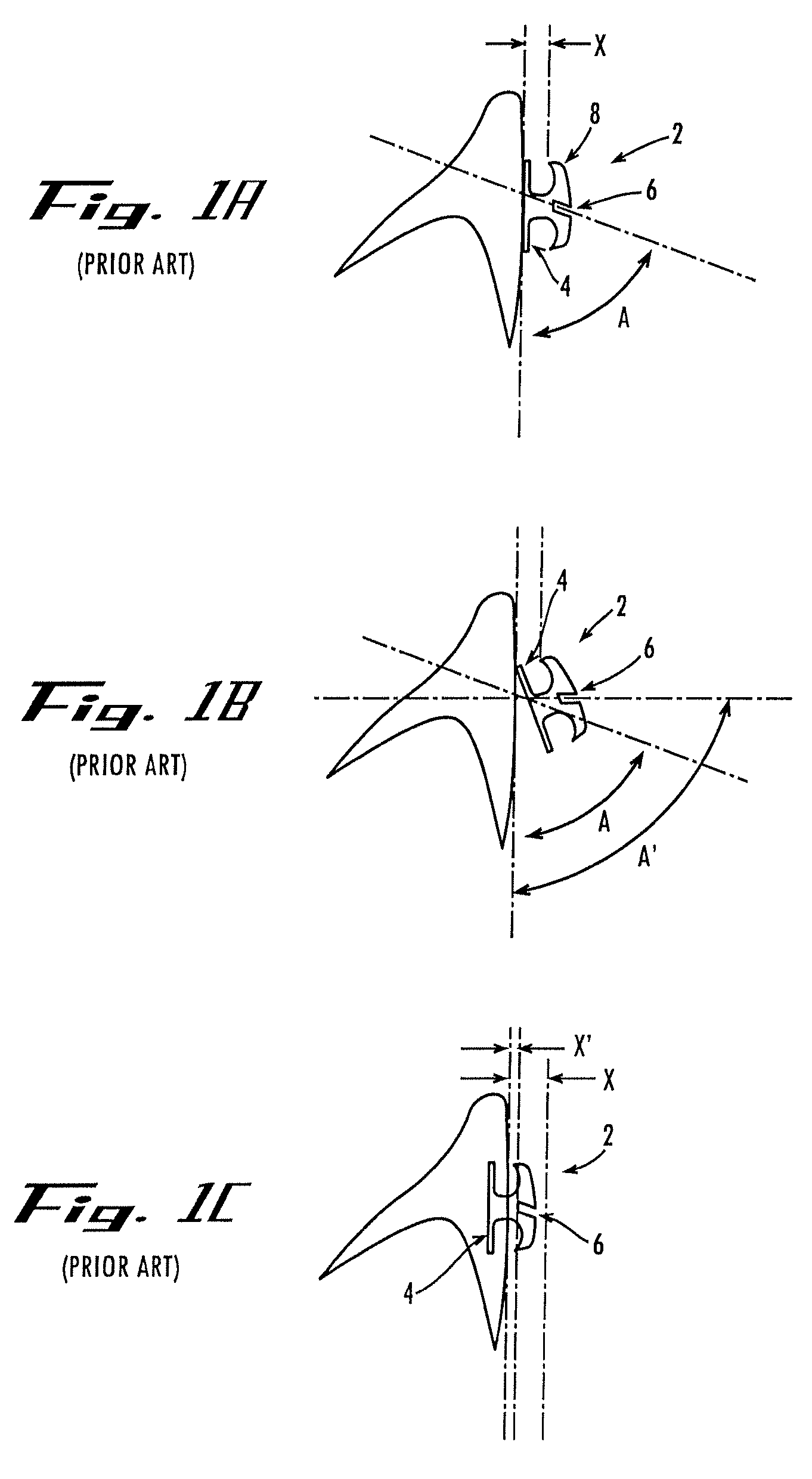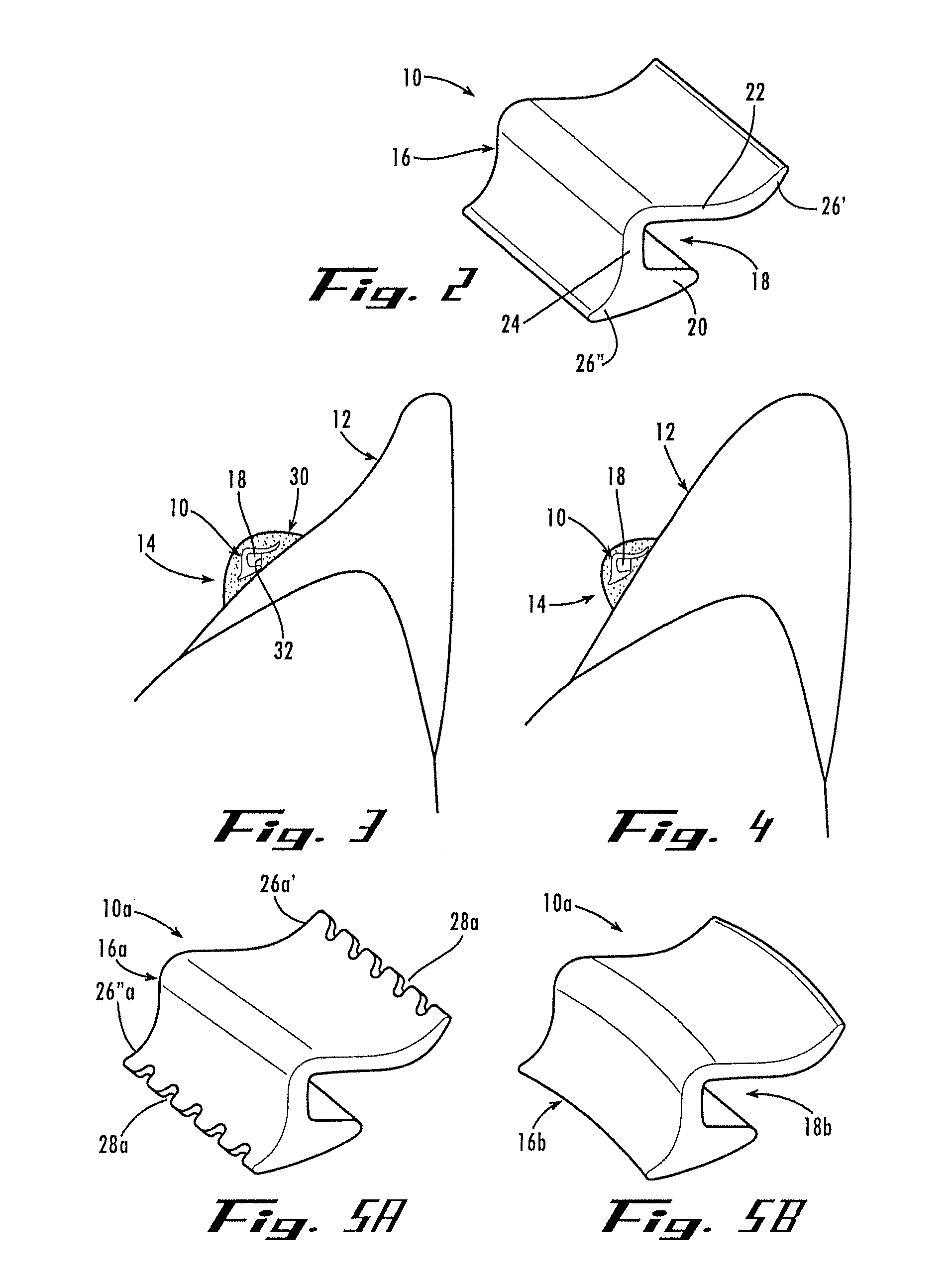Orthodontic bracket and method of attaching orthodontic brackets to teeth
a technology of orthodontic brackets and brackets, applied in the field of orthodontic brackets, can solve the problems of inconvenient use, inconvenient adjustment of bracket positioning, and inability to visualize precise bracket positioning, and achieve the effects of enhancing patient comfort, minimizing visibility, and minimizing size profiles
- Summary
- Abstract
- Description
- Claims
- Application Information
AI Technical Summary
Benefits of technology
Problems solved by technology
Method used
Image
Examples
Embodiment Construction
[0111]Referring to the drawings, FIGS. 1A-C illustrate a conventional prior art orthodontic bracket 2. The bracket has a flat base 4 with a large surface area for bonding to a tooth, a rectangular slot 6 for a rectangular wire, and tie wings 8 for tying down the wire in the slot. Once the base 4 is positioned against the tooth, the orientation and position of the slot 6 are fixed and cannot be easily customized. In particular, the bracket 2 cannot be easily rotated to adjust the angle A of the slot 6 relative to the tooth, for example, to an increased angle A′, without the base 4 acting as a lever arm that increases the in / out position of the slot relative to the tooth (see FIG. 1B). And the bracket 2 cannot be moved horizontally to adjust the in / out position X of the slot 6 relative to the tooth, for example, to a decreased in / out position X′, because of interference with the tooth (see FIG. 1C). As such, the bracket slot 6 is offset a good distance from the tooth surface, giving t...
PUM
 Login to View More
Login to View More Abstract
Description
Claims
Application Information
 Login to View More
Login to View More - R&D
- Intellectual Property
- Life Sciences
- Materials
- Tech Scout
- Unparalleled Data Quality
- Higher Quality Content
- 60% Fewer Hallucinations
Browse by: Latest US Patents, China's latest patents, Technical Efficacy Thesaurus, Application Domain, Technology Topic, Popular Technical Reports.
© 2025 PatSnap. All rights reserved.Legal|Privacy policy|Modern Slavery Act Transparency Statement|Sitemap|About US| Contact US: help@patsnap.com



